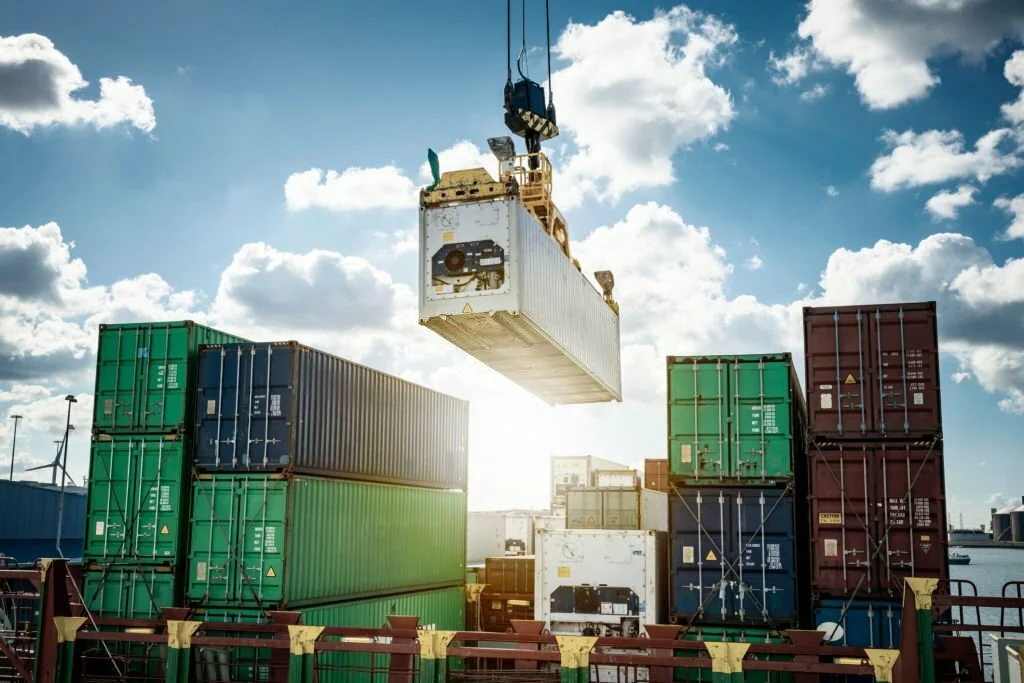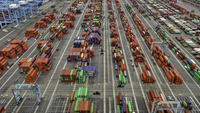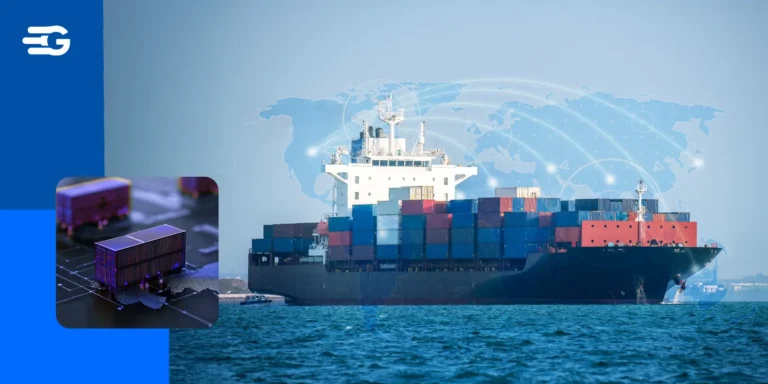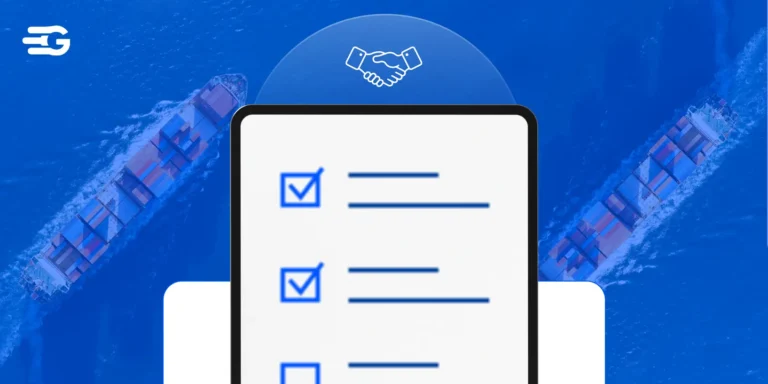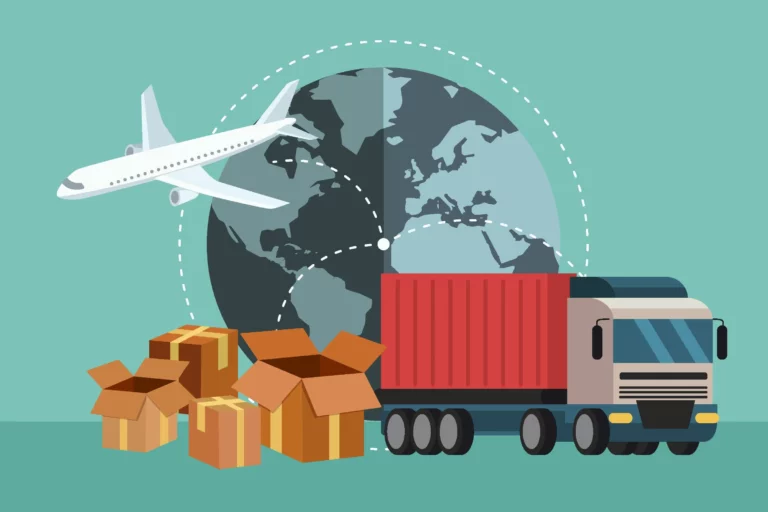Supply Chain Trends Report 2025
As we approach the last quarter of 2025, it’s crucial for businesses to stay on top of the supply chain trends shaping industries globally. With unpredictable challenges and shifting demands, businesses need to be agile to respond to market fluctuations. Below, we examine the top trends that will impact the supply chain industry in Q4 and how companies can prepare to navigate them.
1. Supply Chain Disruptions Are Not Going Away
The unpredictability of the global market has been a persistent issue in 2025, and it won’t change in Q4. From geopolitical tensions to labor shortages and natural disasters, the risks are real. Companies can no longer afford to take a reactive approach. They need to build resilience by diversifying suppliers and regions. The goal should be to anticipate disruptions before they happen.
We remember clients who faced major delays last year due to a natural disaster. Their regular suppliers were unable to meet deadlines, and they had to scramble to find alternatives. The stress and costs were immense. But by the end of the year, they had already made moves to secure multiple suppliers in different locations. This proactive strategy helped them avoid delays in 2025.
Building resilience in your supply chain isn’t just a trend, it’s essential for staying competitive. Companies must look beyond traditional solutions and invest in smart technologies to identify potential risks early on.
2. Sustainability: A Must for Supply Chains
Sustainability is no longer a luxury; it’s a necessity. In 2025, businesses are under growing pressure to cut down on emissions, reduce waste, and ensure ethical sourcing practices. Companies that fail to adopt sustainable practices risk losing market share. Consumers, especially younger generations, are paying attention to how businesses operate.
Many have mentioned how their company had to adopt greener practices to meet consumer demands. They shifted to using electric delivery vehicles and reduced packaging waste. These small changes not only improved their brand image but also saved costs in the long run.
If your company isn’t already taking steps toward sustainability, it’s time to start. Whether it’s investing in eco-friendly packaging or improving your carbon footprint through better logistics planning, now is the time to act.
3. Artificial Intelligence and Automation in Supply Chains
The impact of artificial intelligence (AI) on the supply chain is becoming more pronounced. AI is helping businesses optimize inventory management, improve forecasting, and even automate routine tasks. This trend will continue to grow in Q4, with AI-driven systems becoming more accurate and accessible.
I recall one instance where a supply chain manager used AI for demand forecasting. Previously, they struggled to predict customer demand accurately, leading to excess stock or shortages. After implementing AI, they were able to predict demand with greater accuracy, saving money and improving service levels.
If your business hasn’t integrated AI into your operations, it’s time to consider it. Automation will help your company scale while cutting costs and improving efficiency. In the highly competitive supply chain industry, AI isn’t just a trend; it’s an investment in the future.
4. The Rise of Big Data and Predictive Analytics
Data continues to be a game-changer in 2025. With the rise of big data and predictive analytics, companies now have the tools to make smarter decisions. From identifying trends in consumer behavior to optimizing delivery routes, data-driven strategies will be crucial in Q4.
A colleague of ours shared how they used big data to optimize their warehouse operations. By analyzing past sales and shipment trends, they could predict future demands and adjust inventory levels accordingly. This reduced both waste and storage costs.
If you want to stay ahead, focus on collecting and analyzing big data. With the right insights, your company can better anticipate customer needs, improve delivery times, and make smarter purchasing decisions.
5. Supply Chain Transparency and Visibility
Consumers and businesses alike are demanding greater transparency in the supply chain. The ability to trace products from source to shelf is no longer a “nice-to-have” but a requirement. This trend is pushing companies to adopt tracking technologies, blockchain, and real-time monitoring systems to improve visibility.
One of my clients in the fashion industry faced backlash when it was revealed that their suppliers weren’t following ethical labor practices. Since then, they’ve heavily invested in technology to track their products and ensure ethical sourcing. Their customers now trust the brand more because of this transparency.
Visibility is crucial for your company’s reputation. Whether it’s to show your commitment to sustainability or ensure quality control, adopting new technologies to track your supply chain is a step toward gaining consumer trust.
6. Reshoring and Regionalization of Supply Chains
After the disruptions of the past few years, many companies are reconsidering their global supply chains. Reshoring and regionalization are two key trends that have gained momentum in 2025. By bringing manufacturing closer to home or regional hubs, businesses can reduce risks related to long-distance shipping and overseas suppliers.
A client who previously relied on suppliers from Asia has started to restore some of their operations to Mexico. This has significantly reduced lead times and increased reliability, particularly during peak seasons.
If your business is still heavily reliant on overseas suppliers, it’s time to explore regional alternatives. This strategy will help you mitigate risks, reduce costs, and improve your response times.
7. Dynamic Freight and Shipping Rates
Shipping rates have fluctuated dramatically over the past few years, and 2025 is no exception. The cost of freight and shipping will continue to be volatile, driven by a combination of fuel prices, trade policies, and capacity issues. Companies must be prepared for these fluctuations by adopting dynamic pricing strategies and improving supply chain forecasting.
One business we worked with in the retail sector saw significant increases in shipping costs during peak seasons. By using a Live Freight Rate Index, they could adjust their prices to cover rising shipping costs while maintaining margins.
Freight costs can make or break your profit margins. To stay ahead, work with your logistics partners to develop flexible pricing models and forecast shipping rates accurately.
8. The Growing Importance of Cybersecurity in Supply Chains
As more supply chain functions become digital, the risk of cyberattacks increases. In 2025, businesses need to prioritize cybersecurity to protect their operations from disruptions caused by data breaches or ransomware attacks. A secure supply chain is critical for maintaining business continuity.
I’ve spoken to several companies in the past who were caught off guard by cybersecurity threats. One supplier had their system hacked, which led to delays and data loss. Since then, they’ve made cybersecurity a priority, investing in data protection tools and training employees on best practices.
Ensure your company is protected from cyber threats by investing in advanced security systems and training staff to recognize potential risks. A breach could cost you far more than just data; it can damage your reputation and customer trust.
9. Focus on Supply Chain Talent and Skills Development
As technology and automation continue to take over, companies will face a growing need for skilled professionals in the supply chain sector. Reskilling and upskilling your workforce will be essential for staying competitive in 2025.
A former colleague in logistics shared how their company struggled to find employees with the right technical skills. They responded by creating an internal training program to ensure their team was up to speed with the latest technologies.
Investing in talent development will allow your company to stay ahead of the curve and ensure that your team can handle emerging technologies like AI, robotics, and predictive analytics.
10. Direct-to-Consumer (D2C) Supply Chain Models
The direct-to-consumer (D2C) model is becoming more popular in 2025. This approach eliminates the middleman and allows companies to have direct control over their customer relationships. For many businesses, shifting to a D2C model means rethinking their supply chain strategies, particularly in last-mile delivery.
A client in the consumer electronics industry switched to a D2C model to improve their customer experience. They invested heavily in last-mile logistics to ensure faster delivery and lower costs. The switch allowed them to have more control over their brand and customer service.
If you haven’t already, consider adopting a D2C model. It can improve your customer relationships, streamline your operations, and help you better understand your audience’s needs.
Preparing for Supply Chain Trends 2025 and Key Takeaways
The Supply Chain Trends 2025 report highlights key factors shaping the future of the industry. From AI-driven automation to sustainability, businesses must adapt quickly to stay competitive. In Q4, your focus should be on improving resilience, visibility, and talent development.
As someone who’s worked in the supply chain space for years, I’ve seen firsthand how important it is to stay ahead of trends. The companies that are succeeding today are those that have adopted technology, prioritized sustainability, and built agile supply chains. Your ability to do the same will determine your success in 2025 and beyond.
